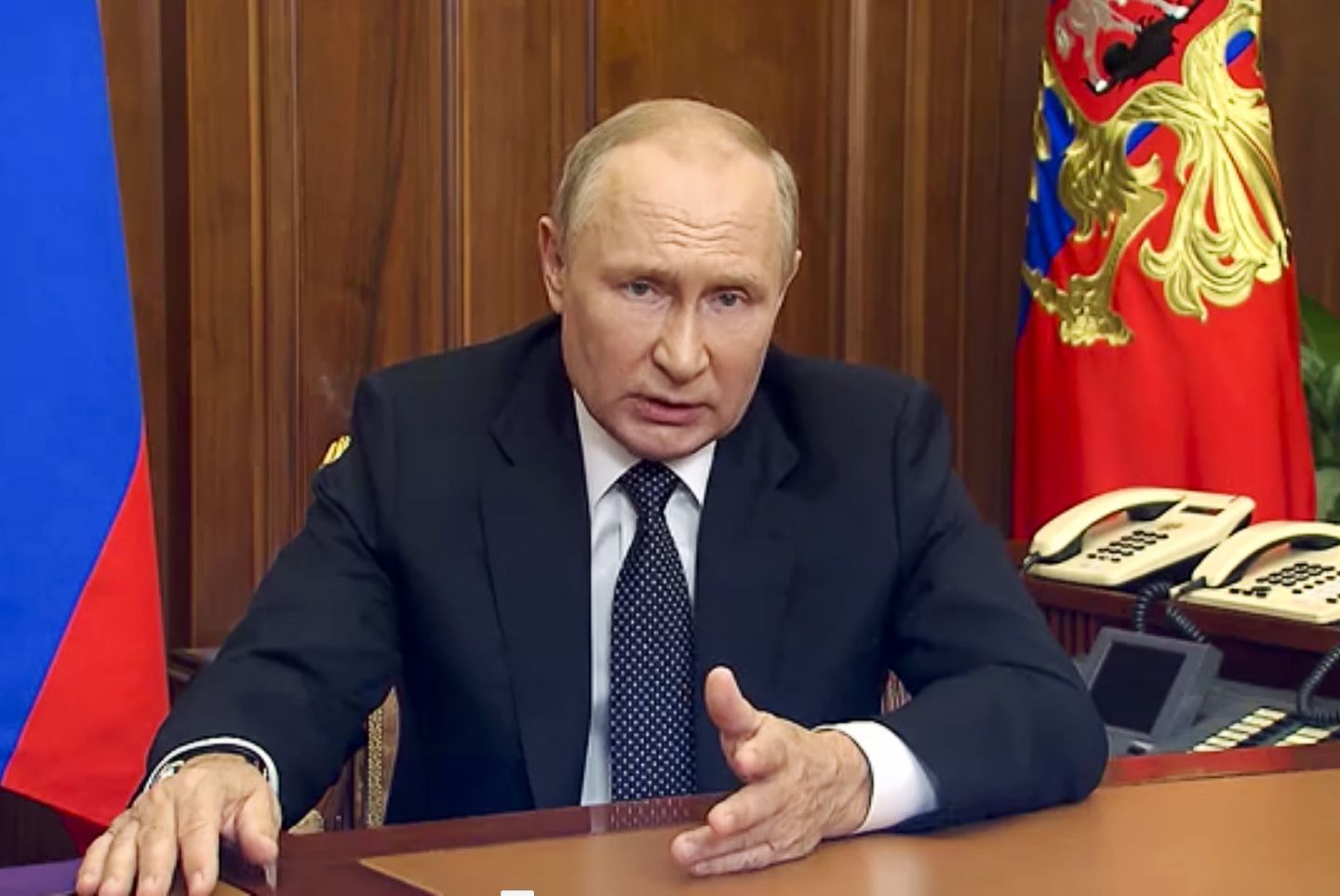

Russian President Vladimir Putin lobbed nuclear threats Wednesday at the West as he announced the partial mobilization of his country’s military reserves, hinting that the Kremlin may be setting the stage for major escalation as its ground invasion of Ukraine falters.
In a seven-minute televised address, Mr. Putin claimed Ukraine and its Western allies want to erode Russia’s independence. He vowed that Moscow will use all tools at its disposal to stop that effort and said his warnings are not a “bluff.”
“Those who are attempting to blackmail us with nuclear weapons must be aware that the prevailing winds may also turn towards their side,” Mr. Putin said, according to his country’s state-run TASS news agency.
“Russian citizens must be confident: the territorial integrity of our motherland, our independence and freedom will be ensured. Let me stress it again: this will be ensured by all of our available means,” he said.
Russian officials have made past references to nuclear escalation throughout the nearly seven-month conflict in Ukraine.
But Mr. Putin’s comments on Wednesday offer the strongest clue to date that Moscow may be willing to use its stockpile of nuclear weapons — the largest in the world — as a trump card.
The Russian president offered the grim warnings just hours before President Biden and Ukrainian President Volodymyr Zelenskyy are scheduled to address the United Nations General Assembly meeting in New York.
Mr. Putin is not attending the yearly gathering. The timing of his threats appears intentional, as leaders from around the world are poised to loudly condemn Russia’s invasion of Ukraine during their U.N. speeches on Wednesday.
Western national security officials have long feared that as its ground invasion of Ukraine stalls amid a fierce Ukrainian counterattack, Russia could decide to employ tactical nuclear weapons as a means to regain the upper hand.
Those fears have grown in recent weeks as Russian forces were pushed out of key Ukrainian cities such as Kharkiv, with some units even pushed back across the Russia-Ukraine border by highly coordinated counterattacks.
Against that backdrop, Mr. Putin also announced the partial mobilization of Russian reserve forces, paving the way for as many as 300,000 fresh troops to enter the war.
He justified the move by claiming that Ukraine’s ultimate goal is to launch an attack on the Russian homeland or on Russian-controlled Ukrainian territory, such as the Crimean peninsula.
Mr. Putin also blamed Ukrainian officials for standing in the way of peace in the Donbas, a region of eastern Ukraine that has become the epicenter of fighting between the two sides.
“After the current [Ukrainian] regime publicly rejected the peaceful solution to the Donbas problem and, what’s more, announced its claims on nuclear weapons, it became absolutely clear that a new large-scale offensive on Donbas … was inevitable. After that, an attack on the Russian Crimea, on Russia would have followed,” he said.
Russia plans to hold referendums in the provinces of Luhansk and Donetsk, which together make up the Donbas, on the prospect of those territories formally joining Russia.
White House officials predicted Tuesday that Mr. Putin will try to use those votes as a pretext to surge more troops into Ukraine under the guise of liberating Donetsk and Luhansk from Ukrainian rule.
“We know that Russia will use the sham referenda as a basis to purportedly annex these territories either now or in the future,” White House National Security Adviser Jake Sullivan told reporters Tuesday.
While the Russian mobilization could provide more manpower for its Donbas campaign, it’s unclear how effective such a move will be over the long term.
Western intelligence officials have said that Russian military morale has plummeted amid Ukraine’s fierce counterattack.
And Russia has already enjoyed a massive manpower advantage throughout the war, but that edge has been largely neutralized by superior Ukrainian battlefield tactics and a steady influx of deadly Western weapons.
• Joseph Clark contributed to this story, which is based in part on wire service reports.
